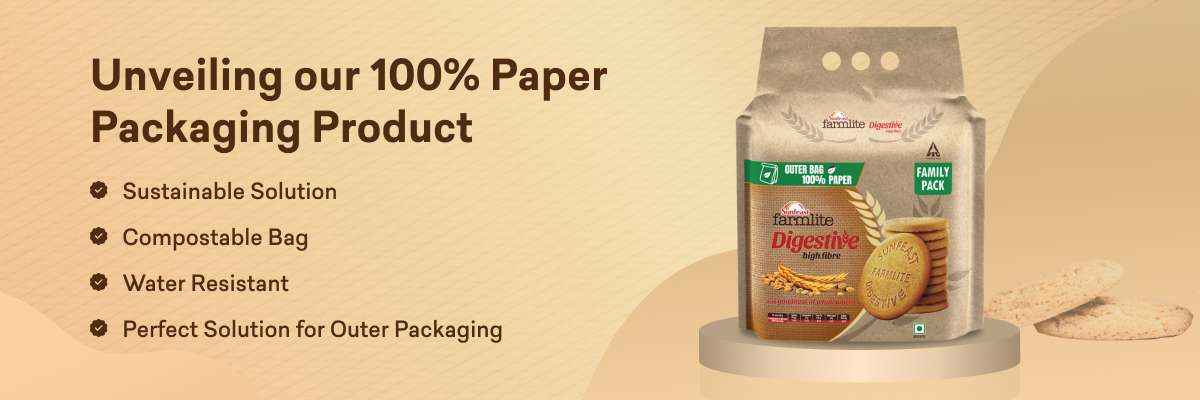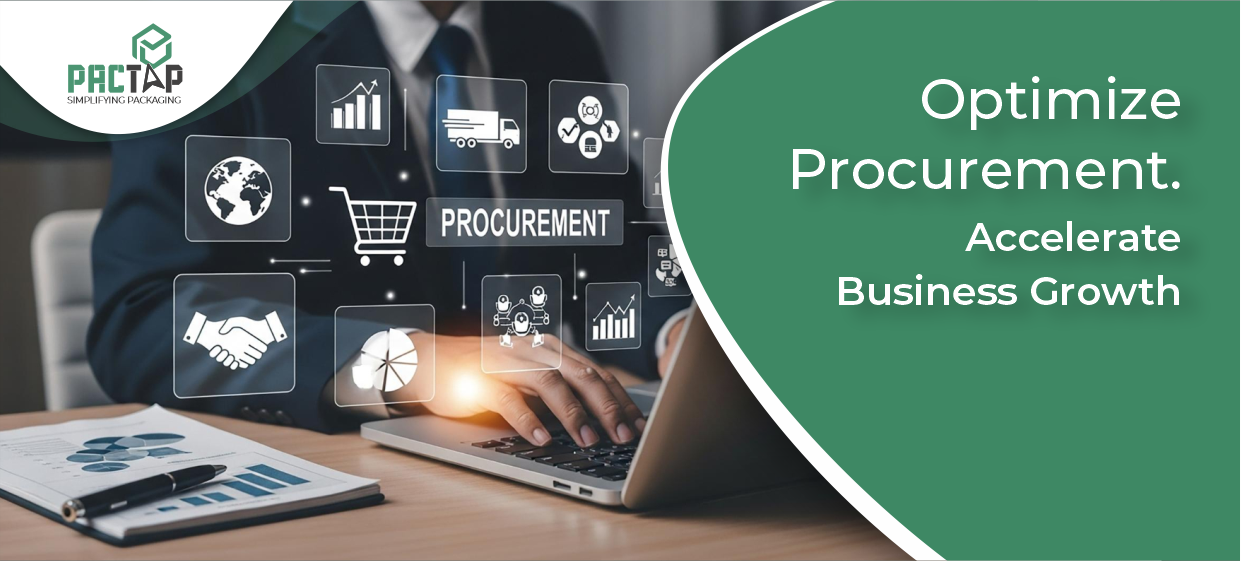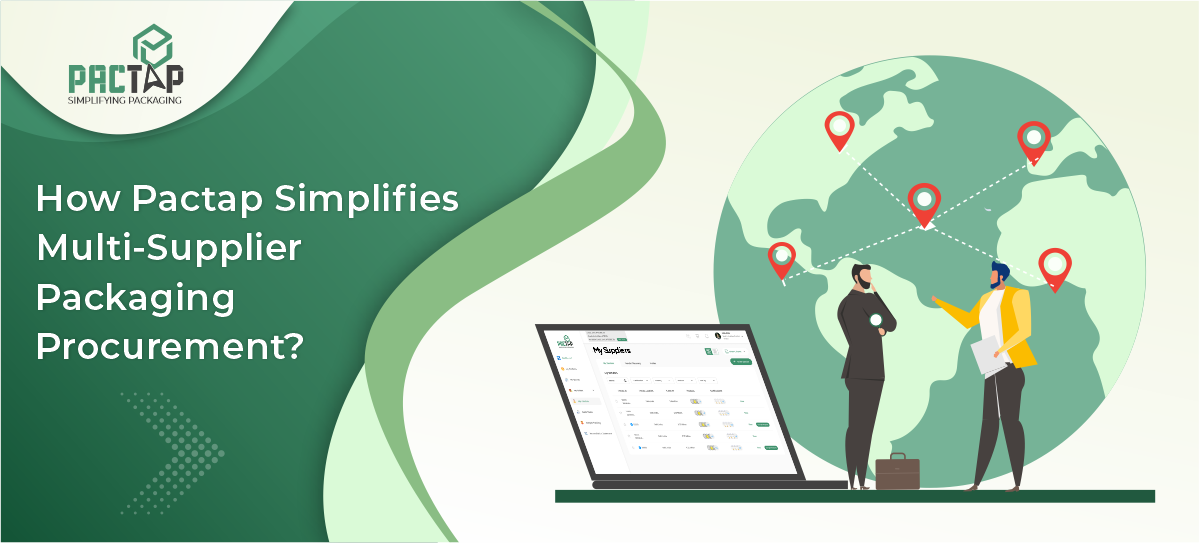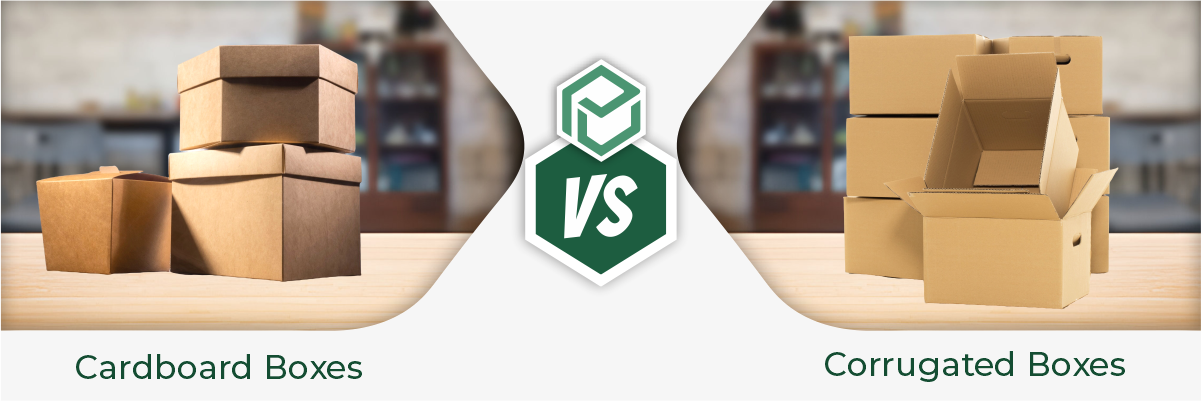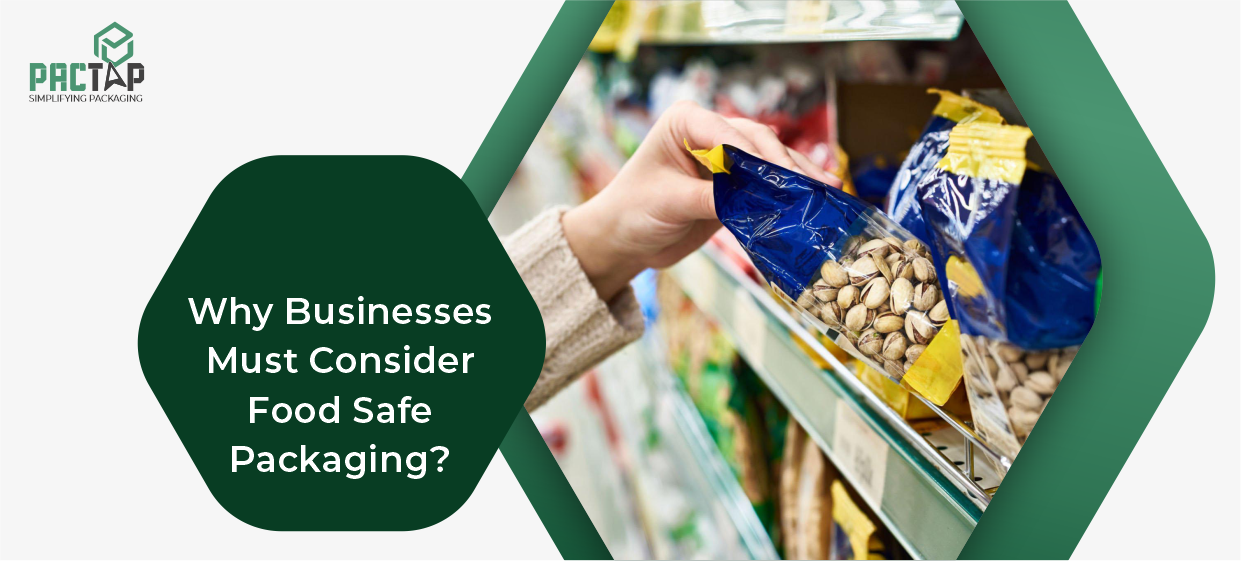The world of packaging is undergoing a rapid transformation, driven by consumer demands for sustainability, convenience, and personalization. As businesses seek to meet these evolving expectations, they’re turning to innovative packaging solutions that offer both functional and aesthetic benefits. Let’s explore some of the most prominent packaging trends and innovations shaping the industry today.
What is innovation in packaging?
Packaging innovation refers to the creation of new or improved packaging solutions that address evolving consumer needs, enhance product protection, improve sustainability, or optimize supply chain efficiency. It involves the development of novel materials, designs, and technologies that provide unique benefits and competitive advantages.
1. Sustainability: A Growing Priority
One of the most pressing concerns facing the packaging industry is sustainability. Consumers are increasingly demanding products that are environmentally friendly, and businesses are responding by adopting sustainable packaging solutions.
The Growing Consumer Demand for Sustainable Products
The packaging industry is undergoing a significant transformation as consumers become increasingly aware of the environmental impact of their choices. There’s a growing demand for products that are not only effective but also sustainable. This shift in consumer behavior is driving businesses to rethink their packaging strategies.
Biodegradable and Compostable Materials: Nature’s Solution
One of the most promising developments in sustainable packaging is the increasing use of biodegradable and compostable materials. These materials are derived from renewable resources and can decompose naturally, reducing the amount of waste that ends up in landfills.
- Plant-based plastics: These plastics are made from renewable sources like cornstarch or sugarcane. They provide a good substitute for conventional polymers made from petroleum.
- Paper and cardboard: These materials are widely available and can be easily recycled or composted. For packing a range of items, they are a common option.
Designing for Recyclability: Making it Easy for Consumers
Recyclability is another key aspect of sustainable packaging. Businesses are focusing on designing packaging that is easy for consumers to recycle. This involves using recyclable materials and providing clear labeling instructions.
- Clear labeling: By using clear and concise labeling, businesses can help consumers understand how to recycle their packaging correctly.
- Recyclable materials: Choosing materials that are widely accepted by recycling programs can make it easier for consumers to dispose of their packaging responsibly.
Reducing Packaging: Less is More
Minimizing the amount of packaging used is another important sustainability strategy. By reducing the amount of packaging, businesses can help conserve resources and reduce waste.
- Efficient packaging design: Designing packaging that is both functional and efficient can help reduce the amount of material needed.
- Bulk packaging: Offering bulk packaging options can encourage consumers to buy larger quantities of products, reducing the amount of packaging per unit.
- Refillable packaging: Using refillable containers can help reduce waste and conserve resources.
2. Smart Packaging: Bridging the Digital Divide
Smart packaging is at the forefront of technological innovation in the packaging industry. By integrating technology into packaging solutions, businesses can enhance the consumer experience, improve product safety, and create memorable brand interactions.
QR Codes and NFC Tags: Instant Access to Information
QR codes and NFC (Near-Field Communication) tags have become ubiquitous in smart packaging. These technologies allow consumers to access a wealth of product information simply by scanning their smartphones.
- Product information: QR codes and NFC tags can be used to display ingredients, nutritional facts, usage instructions, and other relevant details.
- Real-time updates: Smart packaging can provide real-time updates on product information, such as expiration dates or product recalls.
- Language options: QR codes and NFC tags can offer multilingual support, making it easier for consumers to access information in their preferred language.
Temperature Sensors: Ensuring Product Safety
Temperature-sensitive packaging is crucial for products that require specific storage conditions. By incorporating temperature sensors into packaging, businesses can monitor the temperature of products throughout the supply chain and alert consumers if there are any issues.
- Product integrity: Temperature sensors can help ensure the integrity of products that are sensitive to temperature fluctuations, such as perishable goods or pharmaceuticals.
- Consumer safety: If a product has been mishandled or is nearing its expiration date, temperature sensors can alert consumers, preventing them from consuming potentially unsafe products.
- Supply chain visibility: Temperature sensors can provide valuable data on the conditions products experience during transportation and storage, helping businesses identify and address any issues in the supply chain.
Interactive Features: Creating Memorable Brand Experiences
Interactive packaging goes beyond providing information and ensuring product safety. It aims to engage consumers on a deeper level and create memorable brand experiences.
- Augmented reality (AR): AR packaging allows consumers to interact with products in a virtual environment. This can include features like virtual try-ons, product demonstrations, or interactive games.
- Personalized messages: Smart packaging can be customized with personalized messages, creating a sense of exclusivity and connection with the consumer.
- Social media integration: Packaging can be designed to encourage social sharing, allowing consumers to become brand ambassadors and spread awareness.
3. Minimalist Packaging: The Art of Less
Minimalist packaging is a design aesthetic that emphasizes simplicity, functionality, and high-quality materials. By stripping away unnecessary elements, minimalist packaging creates a clean, uncluttered look that is both visually appealing and practical.
Emphasis on Functionality
One of the key principles of minimalist packaging is a focus on functionality. Instead of prioritizing excessive ornamentation, minimalist designs prioritize practical features that enhance the user experience. This can include:
- Easy-to-open packaging: Minimalist packaging often features designs that make it easy for consumers to open and access the product.
- Clear labeling: Minimalist packaging uses clear and concise labeling to provide essential information without overwhelming the consumer.
- Space-efficient design: Minimalist packaging is often designed to be space-efficient, reducing waste and minimizing shipping costs.
Use of High-Quality Materials
Minimalist packaging often features premium materials that contribute to the overall aesthetic and perceived quality of the product. These materials can include:
- Kraft paper: Kraft paper is a popular choice for minimalist packaging due to its natural appearance and sustainable properties.
- Recycled cardboard: Using recycled cardboard demonstrates a commitment to sustainability and can enhance the perceived value of the product.
- Glass: Glass packaging is often associated with luxury and can create a premium look.
Clear and Concise Messaging
Minimalist packaging avoids cluttered layouts and excessive text. Instead, the messaging is typically straightforward and easy to understand. This can include:
- Minimal text: Only essential information is included on the packaging, avoiding unnecessary clutter.
- Clear font: A clean, easy-to-read font is used to ensure that the messaging is legible.
- Strategic placement: The messaging is strategically placed to draw the consumer’s attention without being overwhelming.
4. Personalization in Packaging: Creating Tailored Experiences
Personalization is a growing trend in packaging that allows businesses to create a more meaningful connection with their customers. By customizing packaging to meet individual needs and preferences, businesses can enhance customer satisfaction, loyalty, and brand perception.
Personalized Messages: A Touch of Personalization
One of the simplest yet effective ways to personalize packaging is to include personalized messages. This can include:
- Customer’s name: Addressing the customer by name creates a sense of personal connection and recognition.
- Thank-you notes: A handwritten or personalized thank-you note can add a touch of warmth and appreciation.
- Personalized quotes or recommendations: Including quotes or recommendations that align with the customer’s interests or preferences can make the packaging more relevant and engaging.
Custom Designs: Empowering Consumers to Create
Offering customers the option to customize the design of their packaging can provide a unique and memorable experience. This can include:
- Color customization: Allowing customers to choose their preferred colors can create a more personalized look.
- Image or text customization: Customers may want to add images or text that reflect their personality or interests.
- Design templates: Providing a variety of design templates can make it easier for customers to create their own custom packaging.
Subscription Boxes: A Personalized Experience
Subscription boxes are a prime example of personalized packaging. These boxes typically contain a curated selection of products based on the customer’s preferences or interests. This can include:
- Product recommendations: Subscription box services use algorithms to recommend products that align with the customer’s preferences.
- Customization options: Customers may have the option to customize their subscription boxes by choosing specific products or categories.
- Surprise element: The element of surprise can make subscription boxes even more exciting for customers.
5. E-commerce Packaging: A Crucial Component of Online Shopping
E-commerce packaging is essential to the success of online businesses. It ensures that products arrive safely, minimizes shipping costs, and creates a positive impression on customers.
Protective Packaging: Safeguarding Products
Protecting products during shipping is paramount in e-commerce. This requires packaging that is both sturdy and able to withstand the rigors of transportation.
- Cushioning materials: Using appropriate cushioning materials, such as bubble wrap, foam, or packing peanuts, helps prevent products from being damaged during transit.
- Sturdy containers: Boxes or envelopes made from durable materials like corrugated cardboard can provide essential protection.
- Fragile labeling: Clearly labeling fragile items can help ensure they are handled carefully during shipping.
Efficient Design: Optimizing Space
Efficient packaging design can help reduce shipping costs and minimize environmental impact. By optimizing the use of space, businesses can reduce the overall size of packages, leading to lower shipping costs and a smaller carbon footprint.
- Custom-sized packaging: Using packaging that is specifically sized for the product can help minimize empty space.
- Space-saving techniques: Techniques like void fillers or inflatable packaging can help fill empty spaces and reduce the overall package size.
- Sustainable materials: Choosing sustainable packaging materials, such as recycled cardboard or biodegradable materials, can further reduce the environmental impact.
Creating a Memorable Unboxing Experience
The unboxing experience can greatly influence customer happiness and brand perception. A positive unboxing experience can create a lasting impression and encourage repeat purchases.
- Aesthetic appeal: Using visually appealing packaging can create a positive first impression.
- Personalization: Adding personalized elements, such as handwritten notes or custom-designed packaging, can make the unboxing experience more memorable.
- Ease of opening: Packaging that is easy to open can enhance the overall customer experience.
6. Edible Packaging: A Revolutionary Approach
Edible packaging is a groundbreaking innovation that offers a sustainable and functional solution to traditional packaging materials. By using materials that are safe to consume, edible packaging eliminates the need for waste disposal and contributes to a more circular economy.
Food-Grade Materials: Nature’s Packaging
Edible packaging is typically made from materials that are derived from nature and are safe for consumption. Some common examples include:
- Seaweed: Seaweed is a versatile material that can be used to create edible films and coatings for various products.
- Algae: Algae can be used to create edible packaging materials that are both biodegradable and nutritious.
- Plant-based proteins: Proteins derived from plants, such as wheat gluten or soy protein, can be used to create edible packaging materials.
Extended Shelf Life: A Natural Preservative
In addition to being sustainable, edible packaging can also help extend the shelf life of products. Some edible packaging materials can act as a natural barrier against moisture and oxygen, preventing spoilage.
- Moisture barrier: Edible packaging can help prevent moisture from entering the product, which can lead to spoilage.
- Oxygen barrier: Some edible packaging materials can help reduce the amount of oxygen that reaches the product, preventing oxidation and spoilage.
Nutritional Benefits: A Nutritious Packaging
Edible packaging can even provide nutritional benefits. Many edible packaging materials are rich in vitamins, minerals, or fiber.
- Nutritional supplements: Edible packaging can be used to deliver nutritional supplements directly to the consumer.
- Enhanced product nutrition: Edible packaging can enhance the nutritional value of the product itself.
7. Augmented Reality (AR) Packaging: A New Dimension in Consumer Experience
AR packaging is a groundbreaking innovation that combines the physical world with the digital realm, providing consumers with interactive and immersive experiences. By integrating AR technology into packaging, businesses can enhance product information, create engaging experiences, and strengthen brand connections.
Product Information: Beyond the Label
AR packaging can provide consumers with a wealth of product information that goes beyond traditional labels. This can include:
- Detailed product specifications: AR can display detailed specifications, such as ingredients, nutritional information, or technical data.
- Virtual demonstrations: AR can be used to provide virtual demonstrations of how to use a product, making it easier for consumers to understand its functionality.
- Interactive tutorials: AR can offer interactive tutorials, guiding consumers through complex tasks or providing step-by-step instructions.
Gamification: Making Packaging Fun
Gamification is a powerful tool for engaging consumers and creating memorable experiences. AR packaging can incorporate gamified elements to make the consumer experience more enjoyable and interactive.
- Quizzes and challenges: AR can be used to create interactive quizzes or challenges related to the product.
- Rewards and incentives: Consumers can be rewarded for completing challenges or engaging with AR features.
- Social sharing: AR can encourage social sharing, allowing consumers to share their experiences with friends and family.
Brand Storytelling: Creating Emotional Connections
AR packaging can be used to tell brand stories and create emotional connections with consumers. By using AR to bring the brand’s story to life, businesses can differentiate themselves from competitors and build customer loyalty.
- Interactive narratives: AR can be used to create interactive narratives that immerse consumers in the brand’s world.
- Behind-the-scenes glimpses: AR can provide behind-the-scenes glimpses into the brand’s manufacturing process or company culture.
- Personalized experiences: AR can be used to create personalized experiences that resonate with individual consumers.
8. Packaging Automation: A Driving Force for Efficiency and Cost-Effectiveness
Automation has become an integral part of the modern packaging industry. By leveraging automated systems, businesses can improve efficiency, reduce labor costs, and ensure consistent product quality.
Automated Packaging Lines: Streamlining Operations
Automated packaging lines are designed to handle various packaging tasks with speed and accuracy. These lines can perform tasks such as:
- Filling: Automated filling machines can accurately fill containers with products, reducing the risk of human error.
- Sealing: Automated sealing machines can efficiently seal containers, ensuring product integrity and preventing leakage.
- Labeling: Automated labeling systems can apply labels to products with precision, ensuring accurate and consistent labeling.
- Inspection: Automated inspection systems can detect defects or inconsistencies in packaging, preventing defective products from reaching the market.
Robotics: Enhancing Efficiency and Safety
Robots are increasingly being used in the packaging industry to perform tasks that are difficult, dangerous, or repetitive for human workers. This can include:
- Heavy lifting: Robots can handle heavy loads, reducing the risk of injuries to human workers.
- Hazardous environments: Robots can work in hazardous environments, such as those with high temperatures or toxic substances.
- Repetitive tasks: Robots can perform repetitive tasks with precision and consistency, reducing human fatigue and errors.
Data Analytics: Optimizing Processes
Automation generates vast amounts of data that can be analyzed to optimize packaging processes and improve overall efficiency. This data can be used to:
- Identify bottlenecks: Data analytics can help identify bottlenecks in the packaging process, allowing businesses to take corrective actions.
- Optimize resource allocation: By analyzing data, businesses can optimize the allocation of resources, such as labor and materials.
- Improve quality control: Data analytics can help identify trends in product defects or inconsistencies, allowing businesses to implement quality control measures.
9. Sustainable Luxury Packaging: A Balancing Act
Luxury brands are increasingly recognizing the importance of sustainability in their packaging. Consumers are becoming more discerning, demanding products that are both luxurious and environmentally responsible. Sustainable luxury packaging strikes a delicate balance between opulence and ethical responsibility.
High-Quality Materials: Luxury Meets Sustainability
Sustainable luxury packaging often features premium materials that are both recyclable or biodegradable. This demonstrates a commitment to environmental responsibility without compromising on quality.
- Recyclable materials: Using recyclable materials, such as recycled paper or cardboard, helps reduce waste and conserve resources.
- Biodegradable materials: Materials that decompose naturally, like plant-based plastics or compostable fibers, minimize the environmental impact.
- Sustainable sourcing: Luxury brands are increasingly sourcing materials from sustainable sources, ensuring that their packaging is ethically produced.
Minimalist Design: Less is More
Simplicity and elegance are key elements of sustainable luxury packaging. Minimalist designs focus on clean lines, uncluttered layouts, and high-quality materials. This approach can help reduce the amount of packaging used and create a more sophisticated aesthetic.
- Efficient design: Minimalist packaging is often designed to be space-efficient, reducing waste and minimizing shipping costs.
- Focus on quality: By emphasizing quality materials and craftsmanship, sustainable luxury packaging can create a premium experience without excessive ornamentation.
- Timeless appeal: Minimalist designs are often timeless, ensuring that the packaging remains relevant for years to come.
Ethical Sourcing: A Commitment to Sustainability
Luxury brands are increasingly committed to ethical sourcing practices. This means sourcing materials from suppliers who prioritize sustainability, fair labor practices, and environmental responsibility.
- Fair trade: Supporting fair trade initiatives ensures that suppliers are treated fairly and that workers receive adequate wages and benefits.
- Environmental impact: Luxury brands are working to minimize the environmental impact of their supply chains, from material extraction to production.
- Transparency: Ethical luxury brands are transparent about their sourcing practices, allowing consumers to make informed choices.
10. Transparency in Packaging: Building Trust with Consumers
In today’s era of informed consumers, transparency is becoming increasingly important. Packaging is a vital communication channel that can help build trust and loyalty with consumers. By providing clear information about the product, its origin, and its environmental impact, businesses can demonstrate their commitment to ethical practices and sustainability.
Clear Labeling: A Window into the Product
Clear labeling is essential for providing consumers with accurate and relevant information about the product. This includes:
- Product information: Clear and concise labeling should provide essential information such as ingredients, nutritional facts, and usage instructions.
- Origin information: Consumers are increasingly interested in knowing where their products come from. Clear labeling can provide information about the country of origin or the specific region where the product was produced.
- Sustainability information: Businesses can use packaging to communicate their sustainability initiatives and certifications. This can include information about recycled materials, renewable energy use, or fair trade practices.
Source Tracking and Visibility: Blockchain Technology
Blockchain technology offers a transparent and immutable way to track the source of materials and ensure ethical sourcing practices. By using blockchain, businesses can provide consumers with a complete and verifiable history of their products.
- Supply chain traceability: Blockchain can be used to track the journey of a product from its origin to the consumer, ensuring transparency and accountability.
- Ethical sourcing verification: Blockchain can verify that materials were sourced ethically, ensuring that they were not obtained through exploitation or harmful practices.
- Consumer confidence: Blockchain can help build consumer confidence by providing a transparent and trustworthy view of the product’s supply chain.
End-of-Life Instructions: Promoting Responsible Waste Management
Clear instructions on proper disposal and recycling are essential for encouraging responsible waste management. By providing guidance on how to dispose of the packaging, businesses can help reduce waste and protect the environment.
- Recycling symbols: Packaging should clearly display recycling symbols to guide consumers on how to properly dispose of the product.
- Disposal instructions: Specific instructions on how to dispose of the packaging, such as separating components or dropping it off at a recycling facility, can be included.
- End-of-life programs: Some businesses offer end-of-life programs that allow consumers to return used or damaged products for recycling or repurposing.
Conclusion
The packaging industry is undergoing a significant transformation, driven by consumer demands for sustainability, convenience, and personalization. Businesses are responding by adopting innovative packaging solutions that address these evolving needs while meeting aesthetic and functional requirements. Key trends include: sustainability, smart packaging, personalization, e-commerce packaging, sustainable luxury, and transparency. By embracing these trends, businesses can create packaging that is not only functional but also resonates with modern consumers, contributing to a more sustainable and engaging brand experience.

